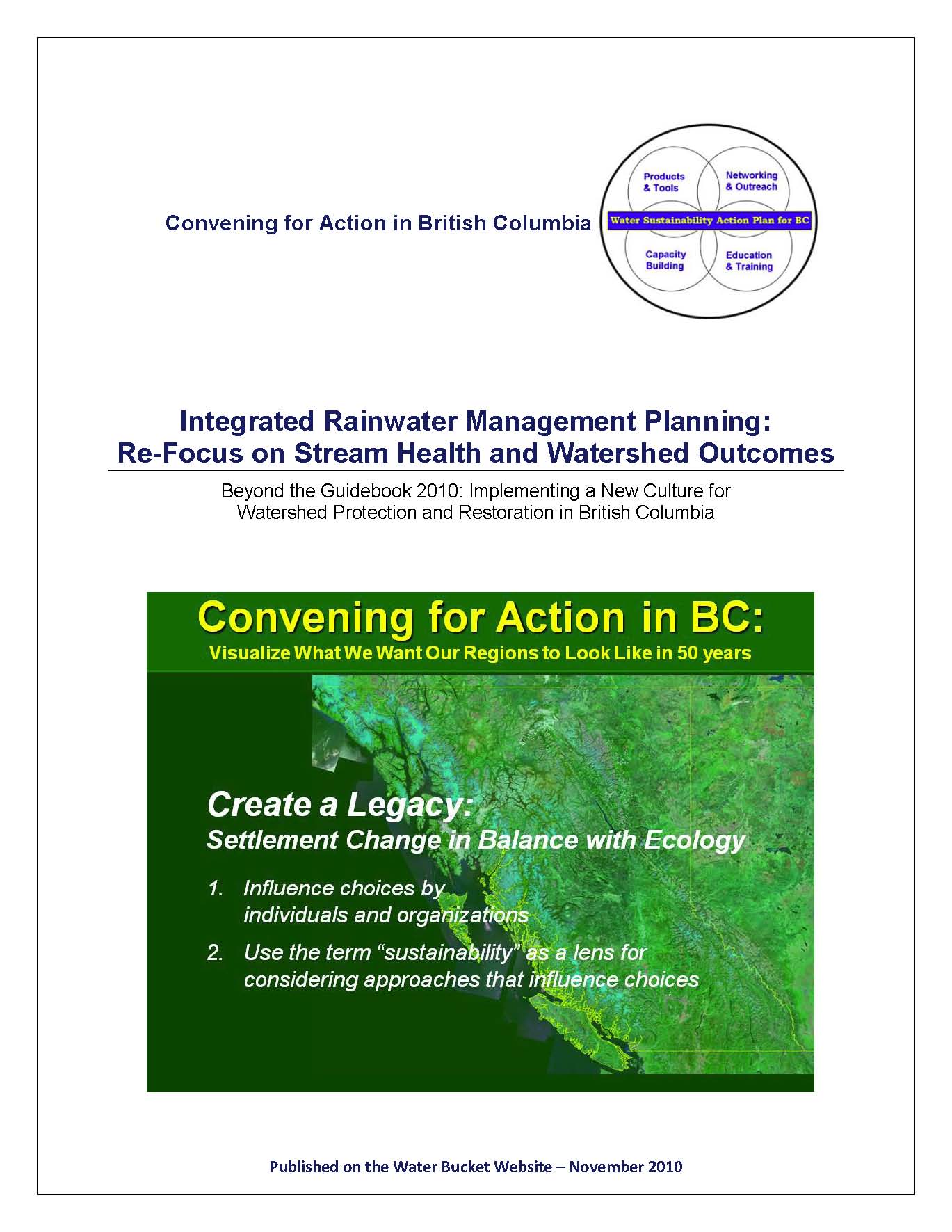A GUIDING PRINCIPLE FOR INTEGRATED RAINWATER MANAGEMENT: Plan at Four Scales – Regional, Watershed, Neighbourhood and Site
Note to Readers:
During the November-December 2010 period, the Water Sustainability Action Plan for British Columbia released a series of five articles that are designed to inform local governments and others about a ‘course correction’ for Integrated Stormwater Management Plans (ISMPs). The series describes:
- what ISMPs are;
- how local governments can do more with less; and
- how local governments can ensure ISMPs are outcome-oriented.
The first in the series provides regulatory and historical context, identifies introduces guiding principles for implementing change on the ground, explains what outcome-oriented means, and sets the stage for the four stories that follow.
ADAPT – Guiding Principles of Integrated Rainwater Management
When the Province released Stormwater Planning: A Guidebook for British Columbia in June 2002, the ISMP approach became a recognized provincial process. Although Integrated Watershed Management Plan better described what was envisioned at that time, use of IWMP was not an option because the Province had an existing IWMP process for natural resource management in wilderness watersheds.
In 2002, the Guidebook introduced a set of five guiding principles for ISMPs. These are captured by the acronym ADAPT, where the “P” stands for Plan at four scales – regional, watershed, neighbourhood and site.
 “In integrating actions at four scales, the intended purpose of an ISMP is to provide a clear picture of how local governments can be proactive in applying land use planning tools to protect property and aquatic habitat, while at the same time accommodating land development and population growth,” states Kim Stephens, Executive Director, Partnership for Water Sustainability in British Columbia.
“In integrating actions at four scales, the intended purpose of an ISMP is to provide a clear picture of how local governments can be proactive in applying land use planning tools to protect property and aquatic habitat, while at the same time accommodating land development and population growth,” states Kim Stephens, Executive Director, Partnership for Water Sustainability in British Columbia.
Rainwater Management is Landscape-Based
Beyond the Guidebook 2010: Implementing a New Culture for Watershed Protection and Restoration in British Columbia, released in June, states that the time has now come to describe truly integrated plans as “IRMPs” to reflect the paradigm-shift from pipe-and-convey ‘stormwater’ to landscape-based ‘RAINwater’.
A holistic IRMP is a potentially powerful tool to achieve a vision for ‘green’ infrastructure, one that protects stream health and fish habitat, and also anticipates climate change,
To Learn More:
To read the complete story, click on Story #1 in the ISMP Course Correction Series: Re-Focus on Stream Health and Watershed Outcomes.
Also, click on Stormwater Management, Low Impact Development, Sustainable Drainage, Green Infrastructure, RAINwater Management…. what is an appropriate term to use? — For more than a decade, the language used by drainage practitioners around the world has been changing to reflect the evolving objectives in doing business differently.
Posted November 2010



